Author: Zhu Yulong
In September 2022, the overall number of license plates issued in Shanghai was 76,733, an 8.56% increase year-on-year. Of these, 41,093 were for new energy small passenger vehicles, with a penetration rate of 53.55%.
For those friends in Shanghai who are still hesitating about purchasing new energy vehicles, I suggest that you keep in mind that the time window for obtaining new energy vehicle license plates is closing. As the penetration rate exceeds 50%, 2023 will mark the beginning of the end of the special license plate period for plug-in hybrid vehicles.
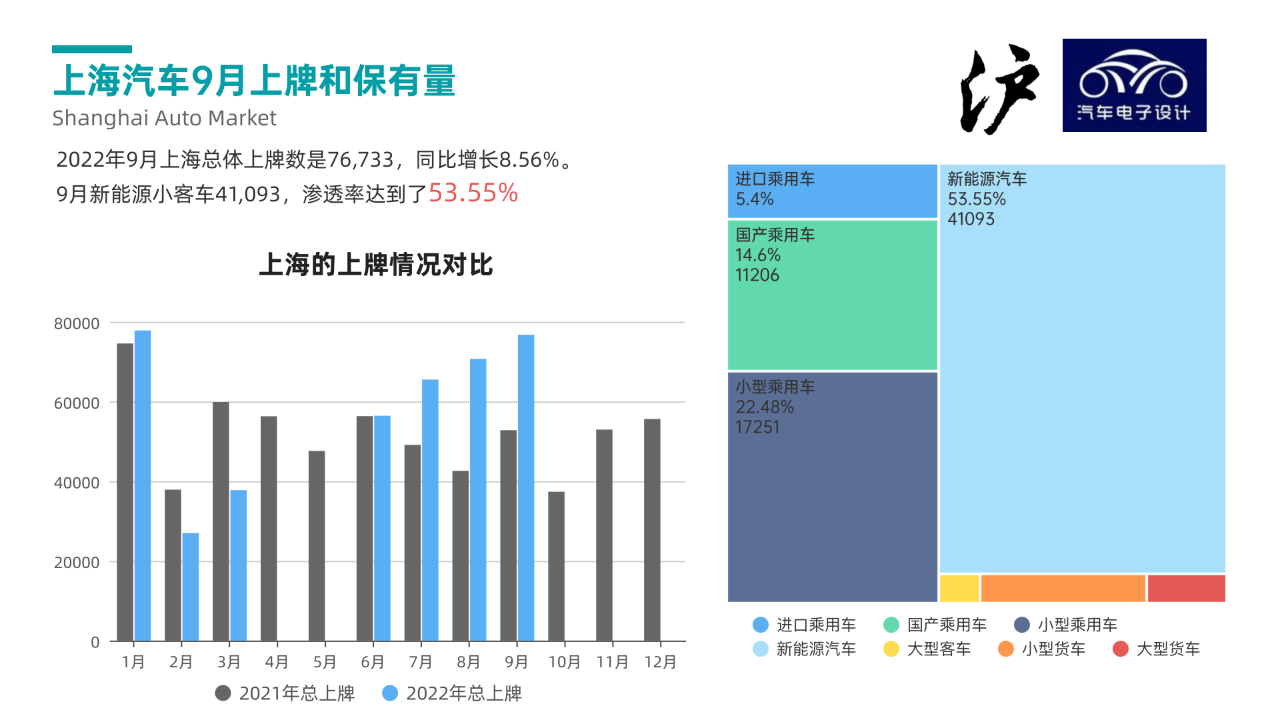
As of September 2022, the total number of cars in Shanghai is 4.995 million, including 750,000 new energy vehicles, 1.29 million Shanghai C license plates, and only 2.4133 million pure Shanghai license plates. The question we need to consider now is that with the annual increase in new energy vehicles expected to be about 300,000, it will take only 2 years for the number of new energy vehicles to surpass that of Shanghai C license plates. Moreover, compared to the high costs of purchasing Shanghai license plates, the gap is narrowing. Additionally, as the usage cost of new energy vehicles is relatively low and they are more frequently used on city roads, they play a significant role in alleviating the congestion on Shanghai’s elevated roads.
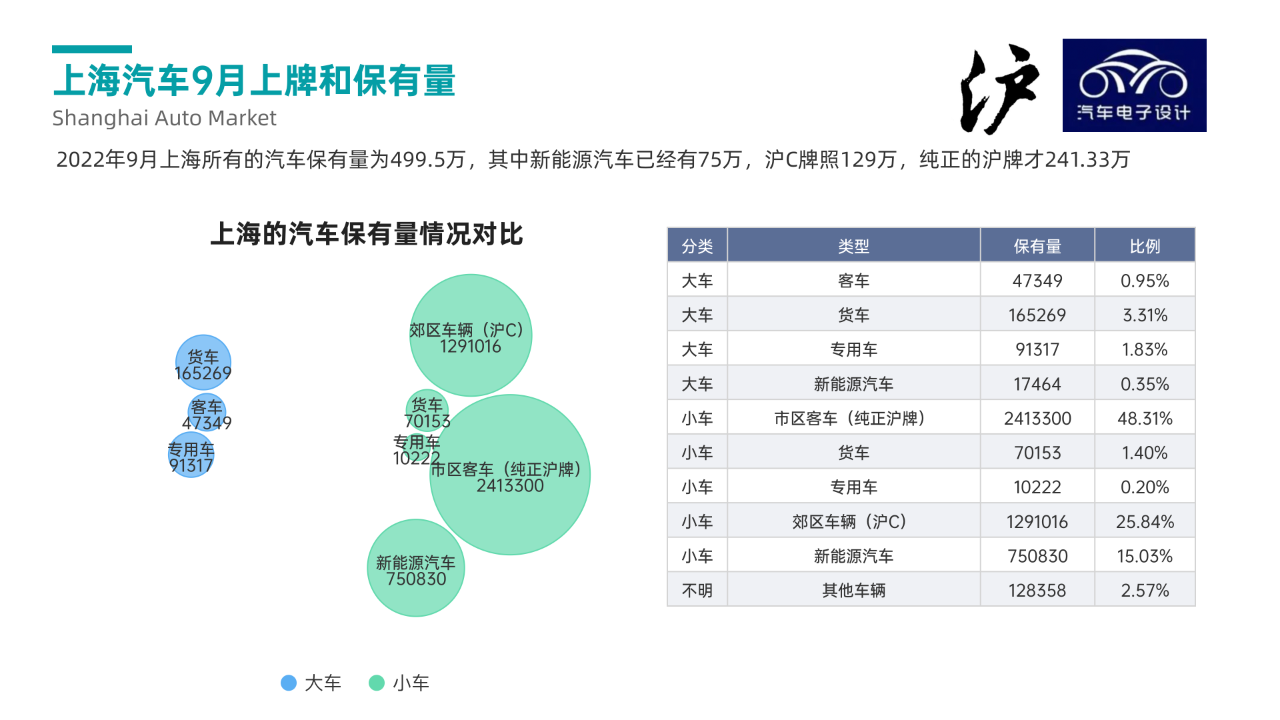
Classification of the local market in ShanghaiThe overall number of Shanghai license plates in September 2022 was 41,000. Stimulated by subsidies of 20,000 yuan from Jiading District and 10,000 yuan from Shanghai City, the number of new energy vehicles registered in Shanghai showed strong growth to compensate for the shortage in April and May.
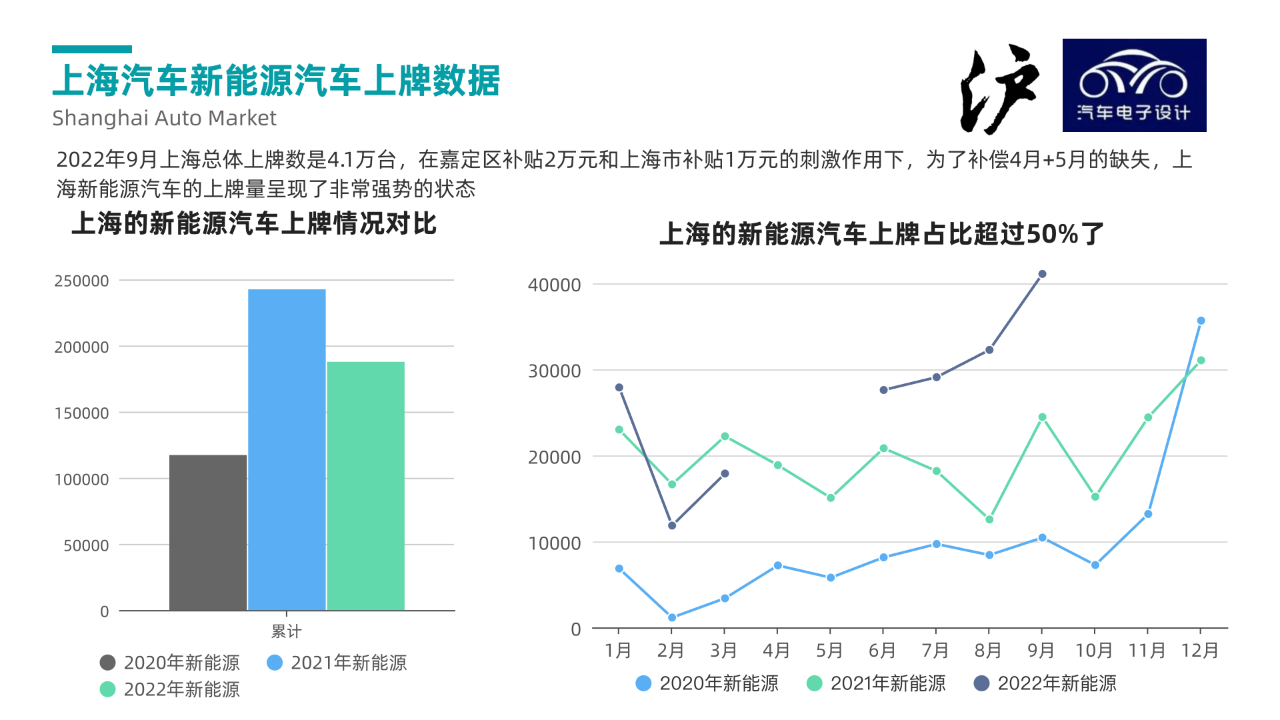
Currently, the penetration rate of new energy vehicles in Shanghai has exceeded 50%:
- The average penetration rate in 2020 was 22.25%.
- The average penetration rate in 2021 was 38.93%.
- The average penetration rate from January to September 2022 increased to 47.83%.
The penetration rate of new energy vehicles in Shanghai has received support from subsidies provided by Shanghai City and Jiading District. However, the withdrawal of PHEVs from new energy license plates in 2023 is a precursor to license plate policy contraction, and we should consider the subsequent changes.
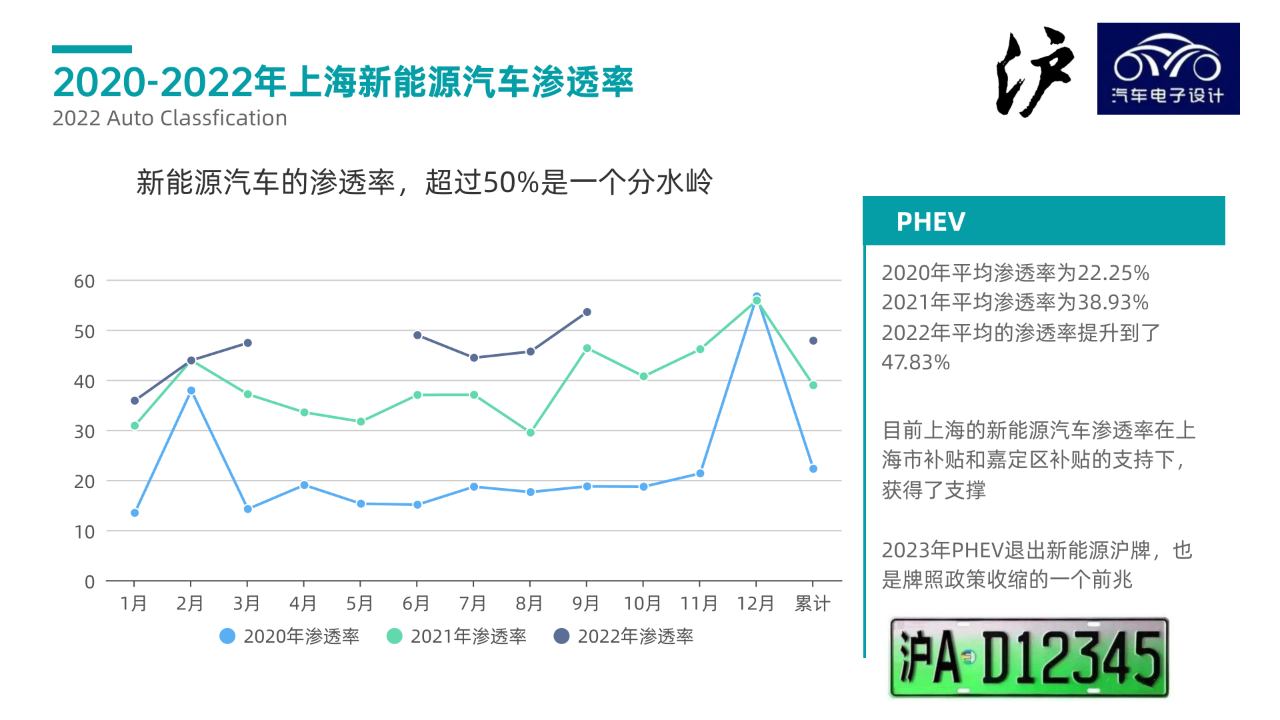
From January to September 2022, we can see that in terms of the number of segments, as new energy vehicles and traditional vehicles compete for market share, in the sedan segment, both mid-sized and popular models have exceeded traditional vehicles in number; in the SUV segment, they have surpassed new energy vehicles. Due to the price of the license plates, there is a gap between Shanghai and imported cars (there are also limited options for imported new energy vehicles) and luxury cars.“`
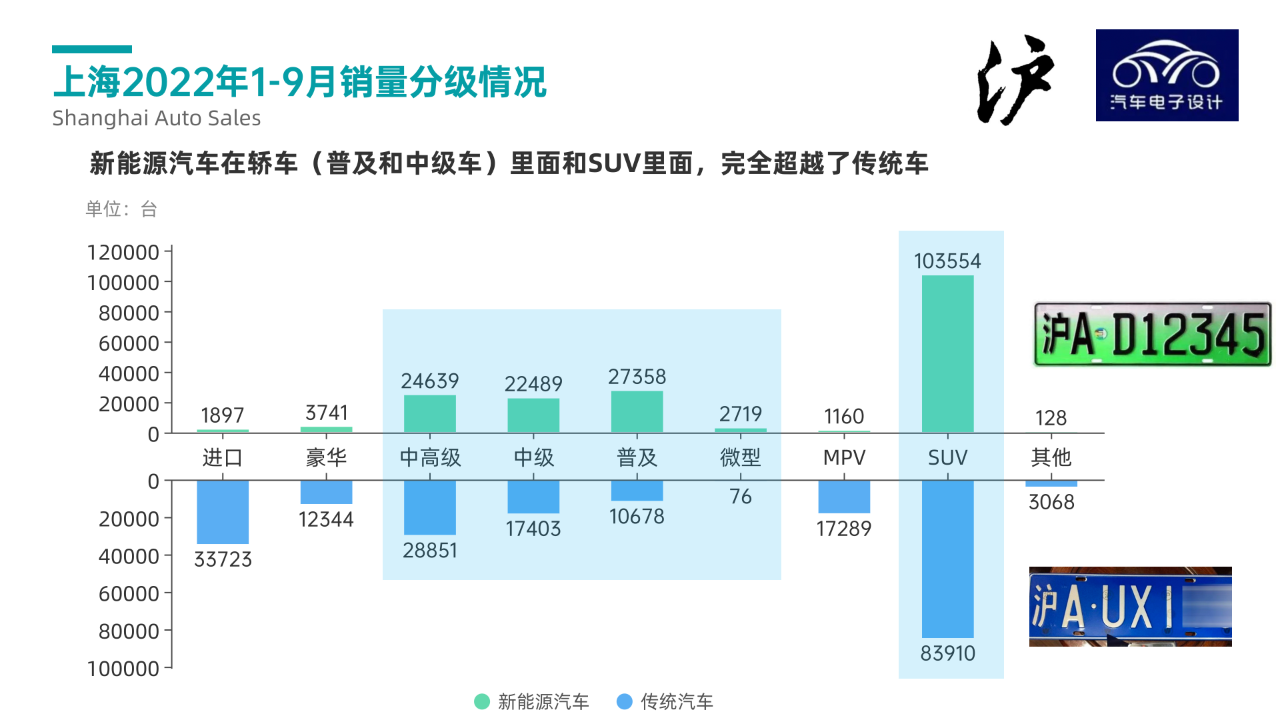
From the perspective of the entire Shanghai license auction and its historical data, the number of bidders who participate in the auction has decreased from 250,000 at the end of 2020 to 100,000, which indicates that the habits of Shanghai’s auto consumers have been changed, which is indeed satisfied by gradually meeting the expanding number of successful bidders, which is currently 150,000. This situation will continue to evolve.
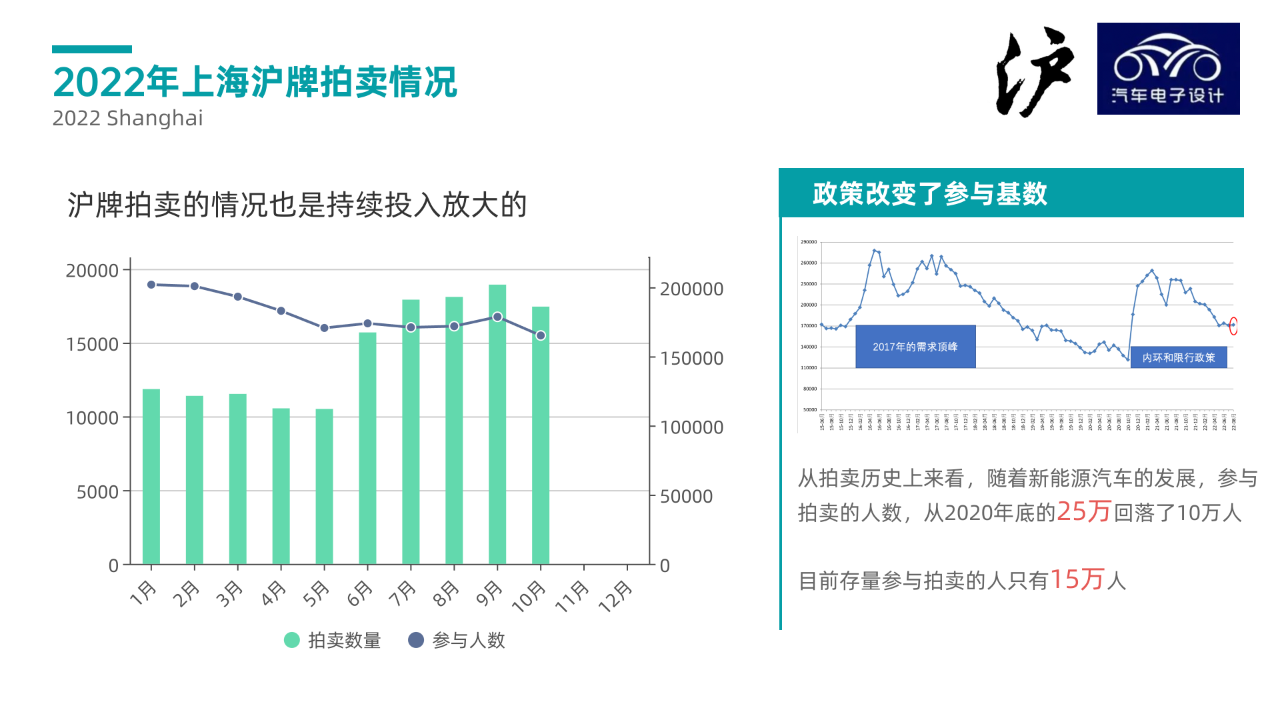
Demand analysis of Shanghai from January to September
The data shows that 168,000 new energy vehicles have been registered for insurance in Shanghai from January to September 2022. Looking forward, the phase-out of PHEV has not had a significant impact on the overall development of new energy vehicles in Shanghai. Recently, PHEV has indeed been steadily registered.
-
BEV 114,000, accounting for 68.1%
-
PHEV 53,500, accounting for 31.9%
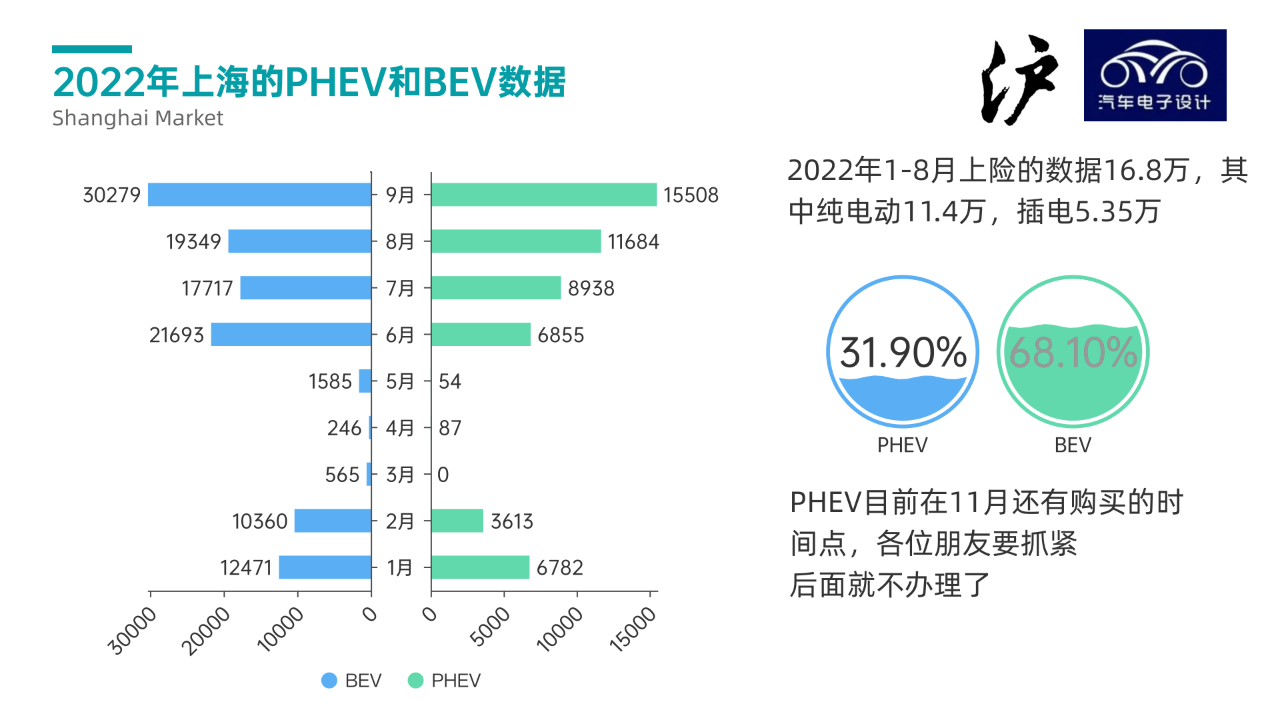
In terms of brand concentration, the concentration in September has further increased.
-
For pure electric vehicles, Tesla has continued to expand its advantage.
-
In the plug-in hybrid field, BYD is overwhelmingly dominant, and Song has recently been registered in large numbers.
“`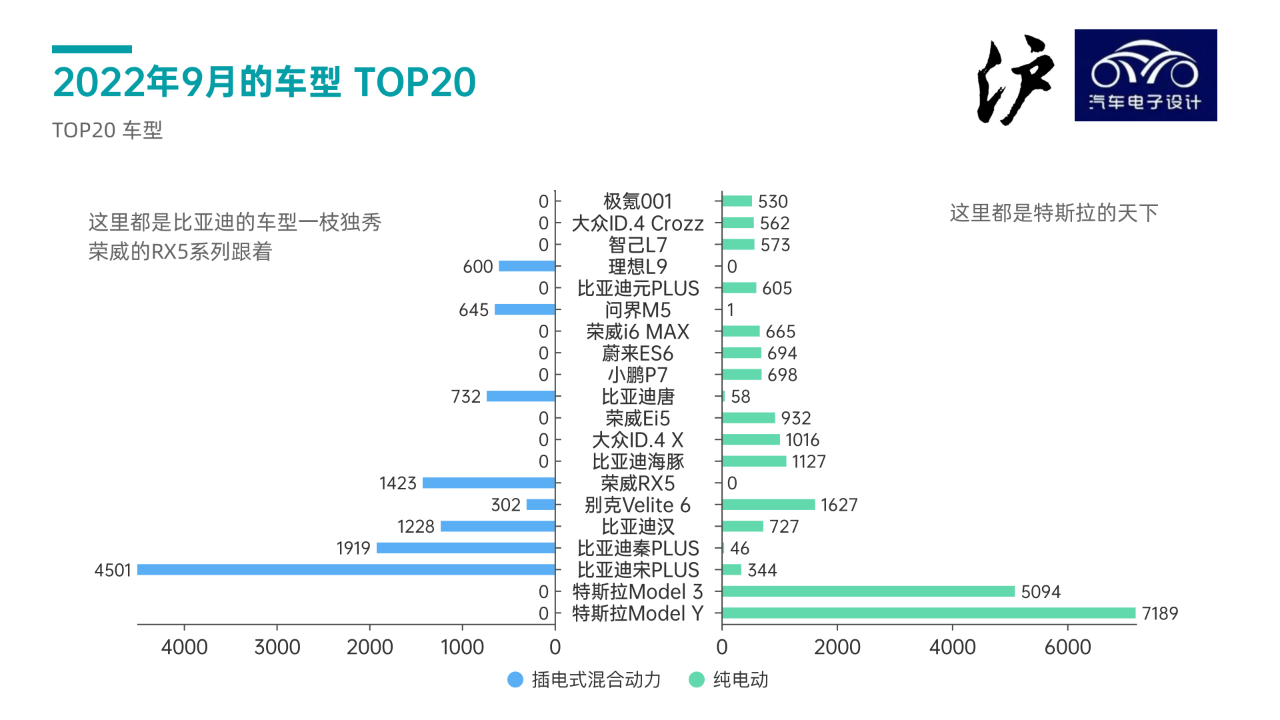
A butterfly chart of all models clearly shows the popularity of the Song Plus in Shanghai and the obvious trend of concentrated licensing. Tesla’s Model Y sold out in a single month, reaching 7,189 units, and Model 3 also sold 5,094 units, with Tesla selling over 12,000 units in a single month.
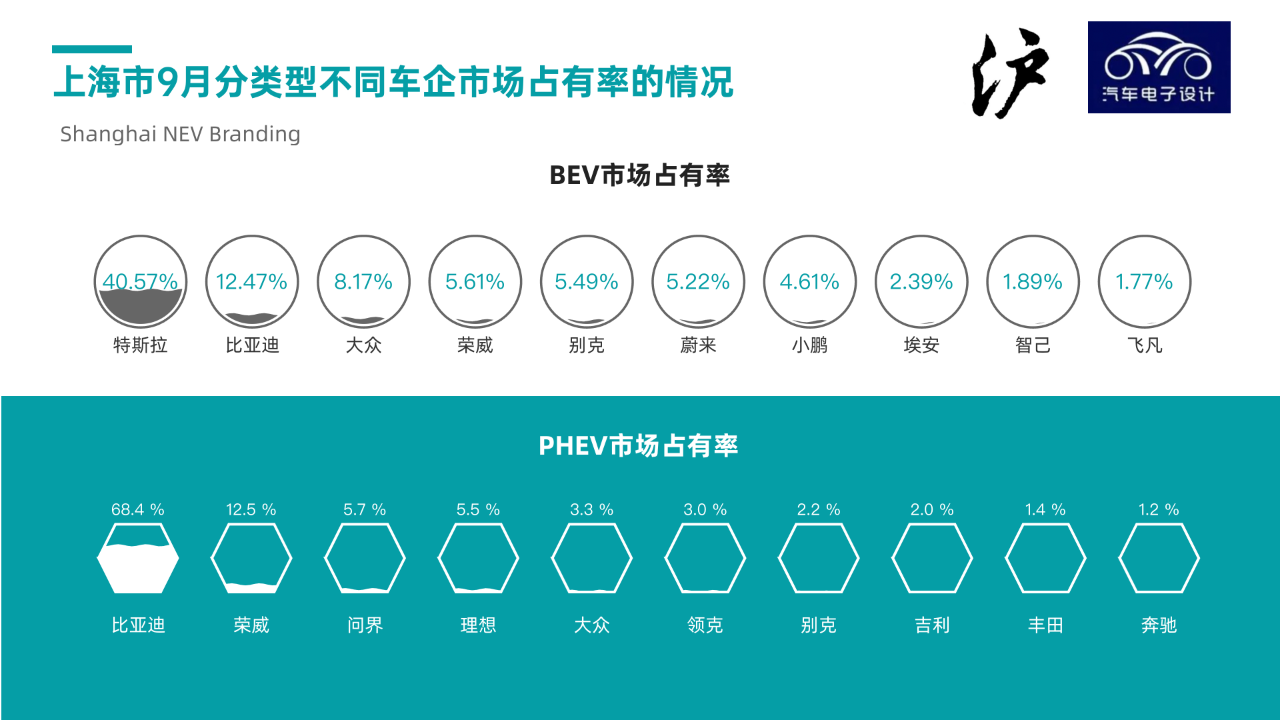
In September, BYD added up to be higher than Tesla in Shanghai, which is not what I expected. Of course, in terms of personal use, the proportion of both is quite high.
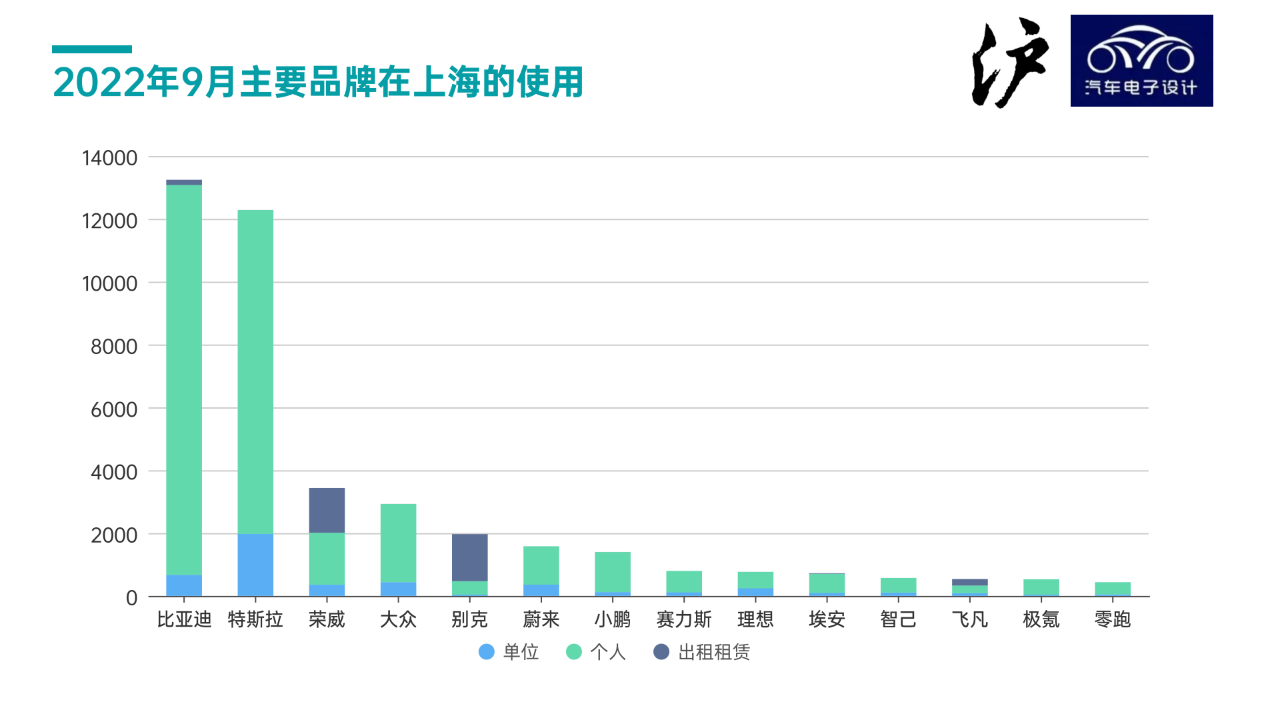
Summary: I still need to sort out the data in Shanghai every month. In the next episode, let’s talk about the evolution of new energy vehicles in Shanghai. How was such a huge development cultivated? If you like this plan, let’s get started.
This article is a translation by ChatGPT of a Chinese report from 42HOW. If you have any questions about it, please email bd@42how.com.
